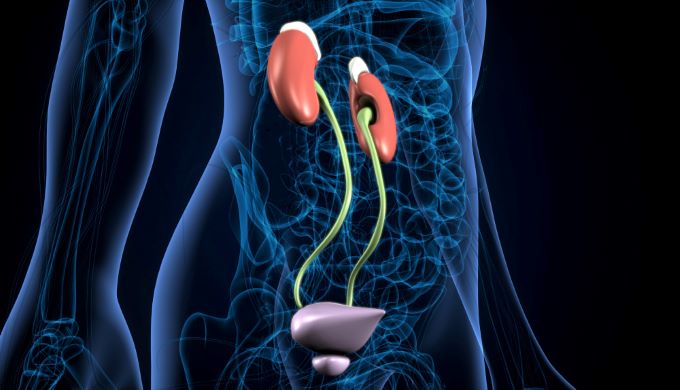Author: Lucy Piper
medwireNews: A three-gene Mycobacterium tuberculosis host response cartridge (MTB-HR) using a fingerstick blood sample has shown promising diagnostic accuracy for childhood tuberculosis (TB), researchers report in The Lancet Infectious Diseases.
The results show that the test, used at the previously proposed TB cutoff score of 1.5, differentiated between 127 children with culture-confirmed TB (median TB score 1.1) and 207 unlikely to have TB (median TB score 2.8) with an accuracy of 85.0%, a sensitivity of 59.8% and a specificity of 90.3%.
Norbert Heinrich (Ludwig Maximilian University of Munich, Germany) and fellow RaPaed-TB consortium members say that the MTB-HR “is close to” the World Health Organization’s target optimal sensitivity for a paediatric diagnostic test of at least 66% in some subgroups.
They add that this diagnostic yield, together with the “widespread availability” of the pathogen detection platform on which the MTB-HR test is run to generate a TB score, and a “short time to result [and] ease of using capillary blood” make MTB-HR “a promising tool to substantially improve tuberculosis diagnoses for children, which is currently the main obstacle to reducing child tuberculosis mortality.”
MTB-HR identifies TB based on the expression of GBP5 and DUSP3, which are upregulated in TB, as well as KLF2, which is downregulated.
In addition to assessing MTB-HR performance against the strict reference standard of culture-confirmed TB, the researchers also compared it with the composite microbiological reference standard of confirmation by culture and/or a currently available rapid test that simultaneously detects TB and rifampicin resistance (Xpert MTB/RIF Ultra assay) in 202 children who tested positive and 207 who tested negative. MTB-HR accurately distinguished those with TB in 71.0% of cases, with a sensitivity of 41.6%.
When a composite clinical reference standard was applied to 432 children with confirmed or unconfirmed TB versus 207 unlikely to have TB, MTB-HR detected TB with a 65.0% accuracy, but the sensitivity was low, at 29.6%.
Toyin Omotayo Togun (London School of Hygiene & Tropical Medicine, UK) and Beate Kampmann (Charité Universitatsmedizin Berlin, Germany) note in a related commentary that the composite clinical reference is “more reflective of routine clinical practice”, and therefore MTB-HR “might not be useful as a standalone test for confirming diagnosis of childhood tuberculosis.”
The commentators also question whether it is suitably superior to currently available diagnostic tests for TB, but they acknowledge that there was improved diagnostic potential to combining MTB-HR with a respiratory sample on the currently available Ultra assay. Among 60 children (<5 years of age), 32% tested positive for TB with MTB-HR alone, whereas 71% of children were identified when MTB-HR was combined with one positive test on the Ultra assay.
MTB-HR was carried out in 639 children below the age of 15 years (median of 5.4 years) at baseline and repeated at 1 and 3 months and again at 6 months for children who were receiving treatment for their TB.
It involved a 100 µL fingerstick blood sample being taken, which was instilled into the cartridge within 15 minutes and loaded onto the pathogen detection platform within 1 hour. The results were available on the same or next day.
The children were enrolled from four African countries (Malawi, Mozambique, South Africa and Tanzania) and one site in India. Fourteen percent of the children had an HIV diagnosis, 11% had severe acute malnutrition and 20% had both. However, Heinrich and colleagues note that while there were small differences across levels of malnutrition and those with and without HIV, they did not reach statistical significance.
They also point out that the sensitivity of MTB-HR to detect TB increased in line with disease severity and the MTB-HR score increased significantly over time in 127 children treated for TB, whereas there were no significant changes in the 207 children unlikely to have TB. This suggests that “the MTB-HR has potential value in monitoring treatment responses, addressing an important gap among available paediatric tuberculosis diagnostic tests,” they explain.
There was also a suggestion from exploratory analyses that the cutoff TB score of 1.5, which was based on research in adults, could be improved upon for children, say the investigators.
For instance, a cutoff score of 1.99 increased sensitivity for TB to 82.1%, with a specificity of 76.4%. And setting sensitivity at 65.0%, yielded a cutoff score of 1.62 with a specificity of 87.9%.
“The use of an age-adjusted or child-specific cutoff needs to be explored”, says the team, as well as assessment of the performance of MTB-HR “at different levels of the care cascade and to test performance by health-care workers rather than laboratory staff.”
News stories are provided by medwireNews, which is an independent medical news service provided by Springer Healthcare Ltd. © 2023 Springer Healthcare Ltd, part of the Springer Nature Group
This independent news story was supported by an educational grant from L’Institut Servier, Suresnes, France.
Lancet Infect Dis 2023; doi:10.1016/S1473-3099(23)00491-7
Lancet Infect Dis 2023; doi:10.1016/S1473-3099(23)00517-0
Image Credits: © JPC-PROD / stock.adobe.com



